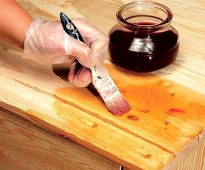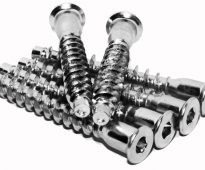 Clean up the closet
Clean up the closet
Technique decoupage wood from napkins - instruction for beginners
In the modern rhythmic world, handmade products have become very valuable, it does not matter if it is clothing, dishes, furniture or other decorative elements. This is because the market is oversaturated with machine-made products. There are many types of art in the world, but this article will plunge you into the world of decoupage.
These decoupage techniques are quite simple in their design, both with patchwork motifs and collages.
Content
- 1 What is decoupage
- 2 Tools and consumables
- 3 Napkins for decoupage: what is it
- 4 Pros and cons of napkins for decoupage
- 5 How to make a decoupage of napkins: master class
- 6 Preparatory work
- 7 Ways of sticking napkins
- 8 Eliminate flaws
- 9 Varnishing
- 10 Nuances and secrets of technology
- 11 Conclusion
- 12 VIDEO: Decoupage - ideas for creativity.
- 13 50 unusual decoupage do-it-yourself options:
What is decoupage
Decoupage is a word that came to us from French and literally translates as "cut." This is a very simple technique is the application of the finished paper pattern on any surface. Most often it is either glass, less metal and plastic.
Absolutely any person can be engaged in this kind of needlework, without spending a lot of time and effort on it.
Tools and consumables
Decoupage is a type of decorative and applied art that allows each person to create something truly beautiful using the most simple and affordable materials. You may not believe, but most of the necessary tools are already at your home!
Decoupage technique for product design and furniture decoupage again at the peak of popularity.
We will understand what is required before starting work.
Instruments
- Sharp manicure or medical scissors convenient for cutting small parts size.
- You may also need a stationery knife.
- Several types of brushes. If you plan to work with small details, you will need flat brushes of small size with a thin artificial pile. For the application of acrylic paint or primer, a regular dishwashing sponge may be useful, but it should be borne in mind that it creates a rough texture, which is not necessary in all work. To create a smooth surface, a large synthetic brush is needed. For drawing small parts on the finished work fit thin brushes made of synthetic pile. It is worth remembering that for applying glue, paint and varnish need separate brushes.
- Sandpaper for sanding the surface during preparatory work or to correct minor errors. Pick up paper with fine and medium grains in several gradations.
It all depends on the goals you are pursuing.
Consumables
- Acrylic lacquer. There are many varieties on the market. There are water-based and glue-based, with different effects (antique, with sparkles, cracks) and finishes (matte, glossy, semi-matte, semi-glossy). Choose a water-based varnish, but the effect and finish should be chosen based on the desired result. Both ordinary construction varnish and special decoupage will be suitable for work, but this is already a more expensive option for advanced craftsmen.
- Acrylic paints, watercolors and pastels for drawing small details or creating additional effects.
- Glue. In the shops for creativity jars with a special glue for decoupage are sold, but again, novice masters who just want to try themselves in a new technique need nothing. Suitable PVA glue from the middle price category (do not take the easiest child) diluted with water in equal proportions.
- Priming. It serves to improve the adhesion between the layers of glue and napkins.
- Printouts. For decoupage, thin paper is also suitable, on which a pattern is printed using a laser printer.
- Napkins. More on their varieties is described in the next section.
As an image, table napkins are used, which are usually multi-layered.
Napkins for decoupage: what is it
If we talk about the popularity of materials for decoupage, then napkins are the undisputed leader. Napkins are the basis of all technology, which is why it is so important to take into account all the nuances when choosing napkins.
You only need the top layer with a pattern.
Of course, at first creative pores, the beginner master can use simple serving napkins, but with the help of such napkins it is not always possible to achieve the desired result, because some napkins are too thin and not of good quality, while others are, on the contrary, too thick. Do not chase for cheap materials, purchase special wipes for decoupage in a specialized shop.
They differ from dining rooms not only in bright color and good print quality, but also in texture and density suitable for decoupage.
Decoupage wipes differ from each other in the number of layers (but the work will still use only the top layer, which shows the picture), the size (21X21cm, 25X25cm, 33X33cm, 40X40cm) and the shape (square, round, rectangular). The same arrangement of motifs can vary from napkin to napkin. There are five basic arrangements: four identical motives, two identical motives located on a napkin in pairs, four different motives, two different motives and, finally, one motive occupying the entire area of the napkin.
The surface of the base must be light.
When choosing napkins, it is also worth paying much attention to their properties.
- Most often, the upper working layer of the napkin is very thin, translucent. Working with him can be difficult, but it is precisely because of this property that the finished work will resemble watercolor painting, due to the merging of the picture and the surface.
- The ability of paper to stretch and wrinkle. In order to prevent this, you should prepare for decoupage carefully.
- Also due to the transparency of the napkin, choose a color for the background more thoroughly.
When applying lacquer, the napkin becomes more transparent, and on a dark background the pattern will lose its contrast.
Pros and cons of napkins for decoupage
Like any creative material, napkins have their advantages and disadvantages.
Consider the main advantages of this material.
- There are many different types of napkins on the market. Each master will find a suitable color for work, texture, ornament.
- Availability. Napkins for decoupage can be bought at almost any store for art or ordered online.
- The cheapness of the material.
The mistakes made while fixing the picture can be easily corrected - remove the crumpled napkin and wash the surface.
Of the minuses can be identified limited in size of the finished work. But this disadvantage can be easily eliminated, if you fantasize.
In comparison with other materials for decoupage, a napkin is the best solution, considering all its positive aspects and minor drawbacks.
For decoupage, you can use postcards that are pre-soaked in water, after which the top layer is removed.
How to make a decoupage of napkins: master class
The main idea of decoupage is to decorate the surface of any object with a pattern or ornament. The process is creative, and, as in any work, there are no concepts of “right” or “wrong”.
The main thing in the work is how accurately you managed to get closer to the original idea.
If you want your work to be smooth, without cracks, scuffs, bubbles, then this step-by-step instruction for beginners will help to avoid such mistakes.
Preparatory work
Remember that a beautiful decoupage with napkins will turn out if the basis on which the napkins are glued is well prepared. It should be as smooth as possible, without tubercles, dimples, crevices, cracks.
For each basic material should conduct their preparatory work.
- Before work, remove the tree from knots, twigs, treat the surface with coarse sandpaper and fix the effect soft. Ground the workpiece. This is necessary so that the ornament chosen by you lay down smoothly and not go bubbles.
- In order for the drawing not to slip, glass or plastic should be well degreased with alcohol or dish detergent.
- Preparation for the decoupage of a metal surface is similar to glass or plastic. A more thorough preparation is carried out in cases where corrosion has formed on the metal, it is rust. It will need to be removed without fail, otherwise disgustingly dirty yellow spots will appear on the ornament.
Figure varnished for reliability.
Note! No matter what material you choose as the base, be sure to paint the blank with white paint after the primer, then the pattern will appear brighter.
Ways of sticking napkins
For all methods and techniques of gluing napkins, there is a single rule: use only the top layer of napkin, which is easily separated from other layers. This article presents the three most simple and common ways of decoupage. Each of them is effective in its own way and is suitable for decorating various objects. This section will tell you how to do decoupage from napkins. The choice of method depends only on you.
Think about what exactly you want to decorate, and choose the method that suits you the most.
Using file
Before you start, prepare:
- water;
- plastic file for storing documents;
- glue;
- varnish
Select the image you want to transfer to the surface.
Algorithm of actions:
- Pour water into the center of the file;
- place the desired ornament in the water, face down;
- straighten the drawing and drain the water;
- We attach the file with the attached pattern to the surface to be decorated and smoothly remove the film;
- fix the wet part of the napkin with glue;
- After drying the adhesive layer, apply a layer of varnish.
This method is very simple.
It is suitable for transferring a piece of napkin to the surface of any shape. For example, a rounded, flat, shape with adjacent faces.
With iron
Here we will need the same materials in the previous method from the supplements only iron.
Algorithm of actions:
- apply glue abundantly over the primed surface;
- with a hair dryer or in the air, thoroughly dry the workpiece;
- on a dry surface carefully lay out the drawing, smoothing and avoiding wrinkles;
- through the fabric or paper for baking, iron the workpiece with an iron, moving from the edges to the center;
- again we glue everything with glue, and after drying it we coat it with varnish.
This method is only suitable for decorating smooth surfaces.
The method is quite simple, even a beginner can handle it.
Using a fan brush
Necessary materials:
- glue;
- ornament;
- brush;
- water.
This method of implanting paper into the base will suit experienced masters who want to decorate concave or, on the contrary, convex objects.
Algorithm of actions:
- attach the selected ornament to the work surface;
- pour water on it;
- fan in the form of a fan gently smooth out the folds with water;
- Cover the dried ornament with glue and fix the result with varnish.
Eliminate flaws
Even experienced craftswomen have misfires, but do not worry, they are easy to fix or prevent. If you decorate the product with small fragments of torn napkins, then smooth out the wet paper with your fingers or a wet brush, this will help prevent creases during drying. Notice the non-uniform color in the background? No problem! Feel free to dilute the paint with water to the desired shade and correct this error. At the dry work there were bumps and irregularities? Grind the work carefully with a fine abrasive and coat with several layers of varnish.
If there are not enough details at work, then acrylic paints and thin brushes will come to the rescue.
The next step is to draw the edges of the finished product. Someone prefers to paint them with paint in the color of the background, someone has a dark contrast, and bold needlewomen wraps the edges of the napkin on the sides.
After that, you should thoroughly dry the product, the process can be slightly accelerated with a hair dryer, but keep the unit at a great distance from work, constantly changing the direction of air flow, so that the product dries from all sides.
After that, you should leave work at night so that all layers firmly and surely grapple with each other.
Important! Remember that half of the mistakes can be prevented by proper technique and preparation of the working surface.
Varnishing
When the product is completely dry, it should be coated with water-based acrylic varnish in several layers. Some works varnish in 100 layers! But when decorating small areas of work, you can keep within three or four layers, until you are sure that there is no step between the background and the picture.
It is very important to sand each coat of varnish before applying a new soft sandpaper.
This will help avoid detachment, air bubbles and cracks. The varnish should be applied with a wide synthetic brush, which leaves no obvious traces. Also protect the varnishing process for your health, work in a well-ventilated area!
Depending on the decoupage technique and the style of the future product, you may need additional materials and tools.
Nuances and secrets of technology
Here are some additional tips that will facilitate decoupage napkins for beginning masters.
Before starting work, moisten the cut out fragments of the picture with water from a spray bottle.
So the napkin for decoupage will become softer and more pliable, and it will be easier to stick it on the base.
If your folds still form, do not despair. Try sprinkling a dry napkin with an acrylic lacquer spray. But remember that then the drawing will not pass the glue through itself, so you should put an ornament on the workpiece already greased with glue.
Conclusion
In this technique there are a large number of styles, each needlewoman will find something to their liking. With the help of decoupage, you can turn a completely unremarkable furniture, dishes, vase, into a real work of art.
The main thing is not to be afraid to try something new, expanding your creative horizons!
VIDEO: Decoupage - ideas for creativity.
50 unusual decoupage do-it-yourself options:
 Clean up the closet
Clean up the closet
 Furniture lacquer. What is it and what is it for?
Furniture lacquer. What is it and what is it for?
 Furniture edge - what is it and why is it needed?
Furniture edge - what is it and why is it needed?
 Choosing screws to assemble furniture wisely
Choosing screws to assemble furniture wisely






